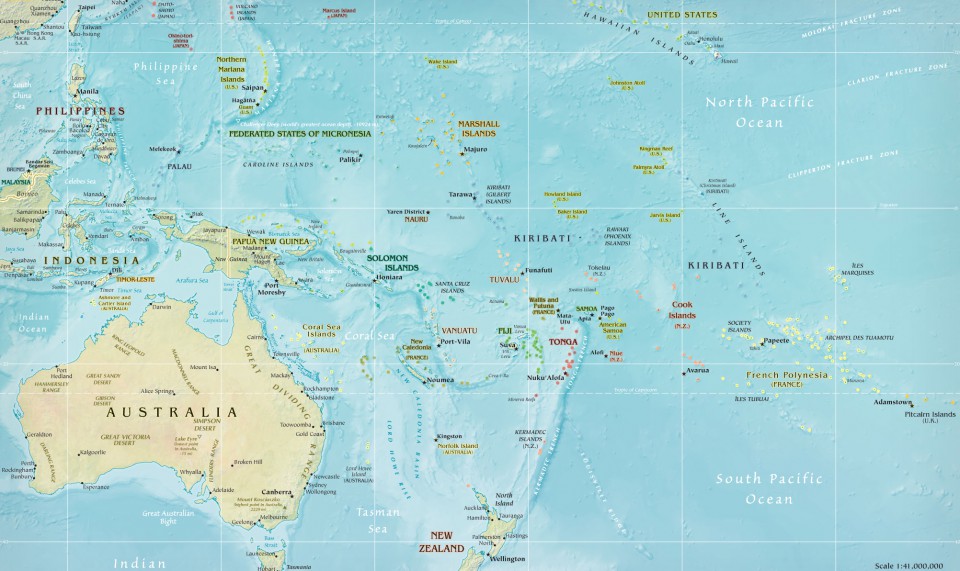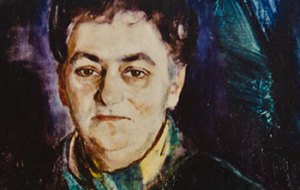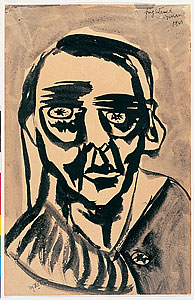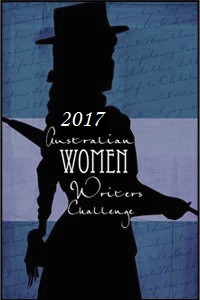
Mother Trolls: Image via Wikipedia
There is very little information about New Zealander, Jean Mather, author of the article, ‘The Unconscious Meaning of Fairyland’ published n two parts in the Australasian Journal of Psychology and Philosophy. At this time she was an Associate of the Department of Psychology at Wellington University. She appears been a kindergarten teacher during the 1920s. Newspaper items refer to her interest in fairy stories. She constructed little plays for children to perform. In this article she took on a mammoth task: to examine the meaning of European myths – fairy stories – and their relationship with the developing mind of the child.
Here, I will trace the main thread of Mather’s articles, as she deftly links internal unconscious processes with their collective expression in myths and legends. Mather is respectful of Freud but like Jung and Adler disputes his thesis that childhood sexuality is at the centre of development. Noting Freud’s recognition of the ‘remarkable similarity which exists between the myths of primitive man and the dreams and phantasies of civilised persons’. ( Mather 1933: I), Mather used the work of two of Freud’s former associates Jung and Adler. Both were unconvinced by Freud’s theories of childhood sexuality. While this had been worked out by members of Freud’s Wednesday group -Abraham (Dream and Myth), Otto Rank ( The Myth and the Birth of the Hero) and Riklin ( Wish Fulfilment and Symbolism in Fairy Tales), Mather preferred Adler’s notions of the ‘inferior personality’ and Jung’s collective unconscious and archetypal psychology to frame her understanding of children’s development. The meaning of fairytales is intertwined with psychic development.
Understanding ‘Fairyland’ to be a metaphor for psychic processes, Mather begins by describing it as a retreat, against growth and the development of independence. Always Fairyland is portrayed as a beautiful and enchanted place where miracles occur, she says. It is paradise and it is also the land of the dead. On may visit but should a mortal eat the magic food is eaten by a mortal ‘he usually becomes captive in the enchanted land and can never return home’. Mather cites Alfred Lord Tennyson’s poem, ‘Passing of Arthur’ describing the place to which Arthur, seriously wounded, intends to make the journey…to the
.…..island valley of Avilion; Where falls not hail, or rain, or wind or snow,Nor ever wind blows loudly; but it lies Deep meadowed, happy, fair with orchard lawns, And bowery hollows, crowned with summer seas.
Fairyland is usually reached across valleys, over rivers or through climbing a mountain. Often it is reached by passing through a secret door, perhaps a hole in the ground. There is no restriction on time, Mather continues. Time does not exist. A day may be a thousand years. ‘The dead sleep on, heedless of the flight of ages’. Fairyland is a retreat to a place before conflict and difficulties began; it is a place where all wishes are fulfilled. She continues:
‘Fairies are not the spirits of the dead, but of the living, being personified projections of our own thoughts and feelings. In fact it is this dual character ( about life and death) that gives real clue to its deepest significance’.
Interestingly Mather omits the final line from Tennyson’s verse: ‘Where I will heal me of my grievous wound. Arthur,wounded in battle against physicalenemies and by the psychological projections, jealousies and rivalries of others, seeks retreat, hoping to heal and repair his wounds.
Death and renewal are constant themes in European myths and legends.One of the most universal: that of the sun-god setting in the west, dying in the west to be renewed and reborn in the eastern skies in the morning. Easter celebrates the cycle of the death and the resurrection in biblical terms; the death of winter and the renewal that comes with spring. Mather wrote:
The sun every evening is immersed in the maternal water, often being threatened by dangers of all kinds, and is born again renewed in the morning. In many cases as, for example, the myth of Osiris, the hero is enclosed in a chest or ark for his journey across the sea; an inversion of the natural fact that the child floats in the amniotic fluid and that this is in the uterus. The chest or box here is a symbol of the mother’s womb, as is the monster by which the hero is swallowed.

In Fairyland time passes in a flash. The return to reality is marked, often, by recognition that life has gone by without one, that one has long been forgotten. Sometimes the voyager is able to restore he life on earth. Often he crumbles away to nothing after eating mortal food. It is the end of omnipotence, maybe? In therapy or analysis the wish to ‘begin all over again’, may refer to a place before it all began, to a desire to return to the womb.For Mather this is not about fears of incest – a view derived from a Freudian perspective but concerns the real love for the parents by the child which does not have sexual connotations in Mather’s view, until the child begins to mature. More particularly it is
‘some difficulty or conflict of the present moment, and that, in seeking the cause in the distant past, one is following the desire of the individual to withdraw himself as far as possible from his present perplexity or his present task
The outcome here, a regressive move, causes re-animation of childish adaptations with the result that
Elaborate dreams and phantasies are then produced, as forms of compensation for the unfulfill ed adaptation to reality’ but their sexual content is only apparently expressive of an incest wish, being a regressive employment of sexual forms to express a need in a symbolical way.
These articles give a good analysis of the ways a troubled person may seek to cope – to withdraw into an underground world where nothing touches one – it is believed. It is linked with the growth from infant time when all wishes were satisfied to the present where frustrations and obstacles are part of everyday living.It is the result of conflict… not creativity – a wish to return to the state ‘before’ rather than ”after’ or ‘now’.
The extraverts that Jung writes of may see the world as a positive place. They have not suffered serious setback while the ‘introvert’ feels the world to be a dangerous place. These are the people who may wander into ‘fairyland’ where they hope that the work of redemption might be done. But tragically for many, the return to the mortal world comes far too late. Time has passed; friends and associates have moved on. One may be left behind. The taste of mortal food breaks the spell. The “child” falls down dead.
Or is it childish phantasy that dies? Does this symbolise the breakdown we have already had – the event that caused the retreat in the first place? It appears that Mather turns to the earliest days of infant life and the relationship between infant and mother when she writes:
It is not surprising that in fairy tales those who are stolen away by the fairies or who wander into fairyland are…persons in whom definite feelings of inferiority may be assumed to exist. It is extremely significant that there should be a widespread superstition that newborns must be protected against the perils of their condition but also against fairies and other supernatural beings which are always on the watch to seize and carry them off if they are left unguarded, leaving in their place one of the fairy folk, or a block of wood made to resemble the stolen child.
One wonders whether these fairy stories are, in fact, describing the plight and response of an abandoned child, a child where bonding between mother and child is broken down.
But the seeking of treasure and reward in fairyland is to seek a worthless solution. ‘It is the treasure of phantasy and dream, Mather writes. It is ‘very precious to the regressive element in man’s nature. but worthless rubbish to the progressive, onward looking aspect of the libido’. It is a bondage that must be overcome – and can only be done by rebellion against the conditions set forth for life in paradise.
It is only by the doing of “evil” that a knowledge of good and evil can be attained, and the primary unmorality and thoughtless irresponsibility of childhood can be destroyed. The “War With Evil” enters in to disrupt the original harmony of life and one’s actions must be no longer instinctive, but the result of conscious deliberation and choice.
We all yearn for fairyland, it seems. We yearn for the golden days of childhood innocence and freedom from responsibility. We have an awareness of ‘paradise lost’ and seek the indulgence reserved for children. The voyage to fairyland is the opportunity to rework old conflicts and to re-emerge afresh having resisted the temptation to eat the ‘magic food’ of the immortals and thus stay in the magic world of unreality – forever.
With multiple examples drawn from Grimm’s Fairy Tales and Andrew Lang’s collection in his Fairy Books, among others, Mather traces variations in fairy stories to illustrate her point. Fairy stories are not just an expression of internal conflict she concludes, but embody a process of working things out at a deeply unconscious level. All of us have out own personal project: to relinquish the shackles of childhood paradise and to make our way in the world.
Jean Mather, MA, ‘The Unconscious Significance of Fairyland’, in Australasian Journal of Psychology and Philosophy, Vol 11, Issue 4, December 1933, pages 258-274; AND: Volume 12, Issue 1, March 1934, pages 16-32.






